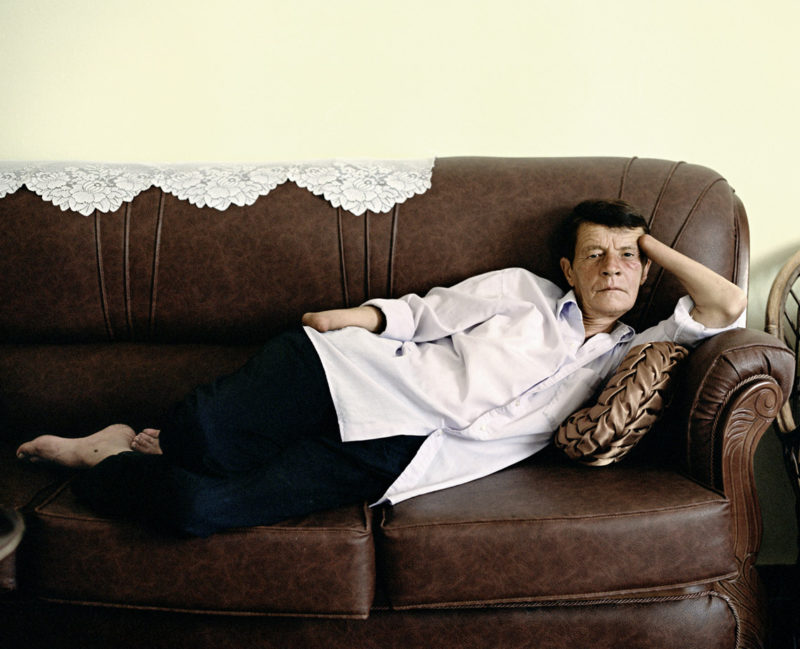The concept, design, and production of a photobook each should add something to the photographs themselves. That, in a nutshell, is how I approach photobooks, both as a viewer and as someone often engaged in the process of making photobooks (in whatever capacity, usually as a teacher). Otherwise, you’d have an album. And you could make an album – provided that that concept makes sense for the photographs. In other words, the end goal is never to have something that’s so outrageous that it screams “photobook.” Instead, it is to produce something that while containing a bunch of pictures, is much more than just a bunch of pictures.
Consequently, there is no formula for how to make a photobook. Every book should be approached on the terms of the photographs it is based on. What story do the photographs tell? (note I’m being incredibly generous with the meaning of the word “story” here) And how can the format photobook be used to tell this story? What this means is that there potentially are a lot of things you can do with a photobook that add something to the pictures. In particular, this means that every photographer (yes, every photographer) would be well advised to talk to other people – designers, editors, etc. – when making a photobook, and to listen carefully to what they have to say.
A wonderful case-in-point is provided by Pepa Hristova‘s Sworn Virgins. The story of Albanian women who, following some tradition, decide to live as men is quite interesting (you want to read the project description on the photographer’s website to learn more about it). But it’s not too hard to imagine a book made from it that you’d pick up, look at once, maybe mutter “that’s interesting,” and then never look again. Part of the reason is that what Sworn Virgins really talks about is not directly in the pictures, and it can never be. Photography cannot depict abstract concepts. Photography cannot depict mental states. Photography can only depict whatever consequences such concepts or mental states have in the world, alluding back to what might have caused what is shown.
An obvious solution is to put some text next to a photograph. If you can’t see it, literally point it out, using words. Large parts of photojournalism operate that way: Get some dramatic picture, add a possibly even more dramatic caption, and you can make sure that your viewers get what you want to tell them. Or maybe not. But either way, such an approach to photography works fairly well, especially in the context of the news. But it’s also rather limiting. What if your viewers don’t see what you want them to see? What if your viewers are tired of being hit over the head with simple messages all day long?
In a photobook context, you have a lot more options, because you have more space. You can try to have people get each and every picture right away, just the way you want. But you can also use the photographs’ cumulative effect and work with that. Or you can mix things. There is a large variety of approaches to “packaging” photography in a book to tell a story, even when that story centers on abstract concepts and/or mental states.
For the book version of the project, also entitled Sworn Virgins, Hristova approached designer Sybren Kuiper (short: -syb-) for help. Kuiper is one of the set of well-known Dutch photobook designers that have been instrumental in greatly expanding our thinking about photobooks. The idea behind most of Dutch design is not to make cool looking photobooks. It’s true, many of those books look cool. But the main point is to get the story across, by whatever means necessary. The format, design, and production of such books usually are not design exercises; instead, they serve a very specific purpose.
How this works, can be seen in Sworn Virgins. Just to make this clear, not every photobook produced by a Dutch designer is good per se. I’ve seen books where the design appears to have overwhelmed the photography (which essentially is the flip side of the Dutch approach – I wrote about this elsewhere on this site). But in the case of this body of work, the photography is greatly enhanced by the very smart design and the beautiful production of the book. The viewer is drawn into a seemingly strange world, and Hristova’s subjects are being brought closer, through a smart mix of the photography (there are archival photographs included) and some beautifully written text (kept separate from the pictures).
Recommended.
Sworn Virgins; photographs by Pepa Hristova; text by Danail Yankov, Sophia Greiff; 228 pages; Kehrer; 2013
Rating: Photography 3, Book Concept 4.5, Edit 3, Production 5 – Overall 3.9
Ratings explained here.
